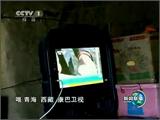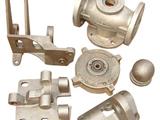◆ Wuhan Agricultural Science and Technology惠民Biological Engineering Co., Ltd. Hubei Golden Head Centipede Breeding Wuhan Agricultural Science and Technology惠民
Hubei Jin Tou Centipede Breeding Wuhan Nongke惠民Jin Tou Centipede Breeding - China's Largest Centipede Breeding Base
(1) Temperature Required for Centipede Breeding:
The suitable temperature for centipede growth and reproduction is 20°C-32°C. Below 10°C, their activity slows down, with less movement and food intake. Below 5°C, they enter a hibernation state.
(2) Relative Humidity of the Air in the Breeding Nest:
Generally around 70%, with the soil moisture in the nest at 30%-35%.
(3) Centipede Breeding Density:
About 600 adult centipedes per square meter, around 1800 medium-sized centipedes, and about 3000 small centipedes. It's important to breed them separately by size to prevent the strong bullying the weak or larger ones eating smaller ones.
(4) Feeding Time for Centipedes:
Feeding generally begins around 6 PM, as centipedes are nocturnal. They feed at night, mainly between 9 PM and 3 AM. Feed every two days, ensuring sufficient food to avoid starvation-induced cannibalism. Although centipedes have a wide range of food sources, they require fresh food and will not eat spoiled food. In one feeding session, they can consume up to 1/5 to 3/5 of their body weight. After eating their fill, they can survive without food for ten days to half a month.
(5) How to Supply Water to Centipedes:
Centipedes have the ability to endure hunger, surviving without food for one to two months. However, they cannot live without water. During hot weather, it is essential to provide drinking water promptly. This can be done by soaking corn cobs or sponges and placing them on bricks or tiles inside the nest. Alternatively, wet cloth strips can be draped over bricks or tiles, or water containers can be placed. If using water containers, ensure that centipedes do not fall into them by placing small stones inside to balance the water level. Regularly change the water to keep it fresh.
Hubei Jin Tou Centipede Breeding Wuhan Nongke惠民Jin Tou Centipede Breeding - China's Largest Centipede Breeding Base
(6) What Kinds of Feed Do Centipedes Eat:
Centipedes prefer fresh animal-based feed, such as soft-bodied, juicy small insects like crickets, Tenebrio molitor, locusts, spiders, mole crickets, grasshoppers, earthworms, flies, maggots, sparrows, rodents, frogs, etc., as well as meat from these animals, pig blood, chicken blood, tender grass sprouts, and watermelon rinds.
(7) Maintaining Hygiene:
It's crucial to maintain cleanliness in the centipede nests. Any leftover feed and dead bodies should be promptly removed. If not cleared, they may rot and mold, causing illness if consumed by centipedes. Every month, potassium permanganate can be diluted in water until it turns light purple, then sprinkled on the bricks and tiles in the nest for disinfection.
(8) Seasonal Management of Centipedes:
(1) Spring Management: Pay attention to management before and after the Awakening of Insects. At this time, the temperature is relatively low. Although centipedes start to revive, their activity and digestive abilities are weak. Feeding too early can cause indigestion. Generally, feed once every five days.
(2) Summer Management: Summer is the peak season for centipede activity. Ensure sufficient food supply and maintain hygiene by removing any rotten corpses or spoiled feed. Provide water, keeping it clean. Indoor breeding areas can open windows for ventilation.
(3) Autumn Management: For young centipedes born in August and September, prepare for winter by grouping them properly and providing more insect-based feed to strengthen their physical condition and store energy. Monitor temperature changes in the activity area for other age groups.
Hubei Jin Tou Centipede Breeding Wuhan Nongke惠民Jin Tou Centipede Breeding - China's Largest Centipede Breeding Base
(4) Winter Management: As temperatures drop around Frost Descent, centipedes stop eating and enter hibernation. During hibernation, focus on frost prevention.
(9) Care for Different Age Groups of Centipedes:
(1) Young Centipede Management: After 42 days of incubation, centipede eggs hatch into young centipedes. At this stage, they have a large appetite, so feeding must be sufficient, and water must be provided. Offer palatable feed.
(2) Adult centipedes during growth, development, and egg-laying require high-quality feed. At this time, mainly insect-based meat is fed, increasing the frequency of feeding. ◆ Wuhan Nongke惠民Biological Engineering Co., Ltd.
Hui Min Official Website: http://hm9188.com/index1.asp
Consultation Phone: 027-87672386 87672385 Teacher Yu, Teacher Guo: 1 5 5 2 7 8 2 6 1 5 8, QQ Online: 1582684012
Address: Room 318, Tian Hui Building, Huazhong Agricultural University, Wuchang District, Wuhan City



